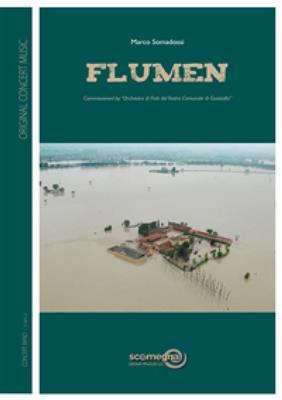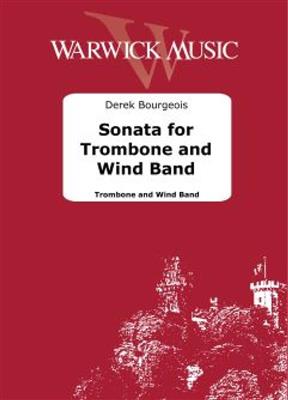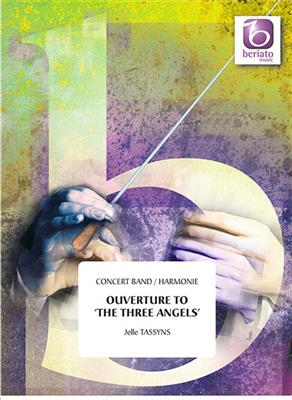Results
-
 £118.99
£118.99Seaside Road - Itaru Sakai
This piece was composed in the summer of 2000, on commission of the Whightull Wind Ensemble. Seaside Road is a march in two-four time. The work begins with a tempestuous sound, followed by a light passage. Featuring, amongst others, your Bass Clarinet and Euphonium soloists in the trio section, the work builds towards an agile tutti before concluding with a powerful closing section. A must for all your summer season concerts.
Estimated dispatch 7-14 working days
-
 £84.99
£84.99A Copland Portrait - David Conte
Originally commissioned by maestro Neal Gittleman, A Copland Portrait was premiered by the Dayton Philharmonic Orchestra in January 2000. In March of 2015, First Lieutenant Ryan Nowlin's transcription of this work for band was premiered by "The President's Own" United States Marine Band under the direction of Lieutenant Colonel Jason Fettig. ECS Publishing is proud to offer both the band and the orchestra version. Conte on the creation of this overture: "I set out quite consciously to evoke various aspects of Copland's work by combining and recombining them within the terms of my own musical personality. For example, the first theme of A Copland Portrait combines the character of a theme from The Red Pony with the rhythmic texture of the scherzo of the Third Symphony. While composing the piece I was conscious of drawing inspiration from many of Copland's works; a melodic shape here, a harmonic gesture there, until I arrived at something that felt fresh and new to me. A Copland Portrait is cast in a traditional Sonata-Allegro form. After a vigorous, syncopated orchestral tutti, the first theme is announced in the solo oboe, accompanied by a steady eighth-note ostinato. Playful interjections are stated in the flute and bassoon. The syncopated tutti returns; the first theme is stated again, this time in the low winds. This theme builds to a colorful climax, leading into a more dissonant transition section, which gradually slows and gives way to a lilting, more lyrical second theme in the clarinet. After some modest development of the second theme, a more plaintive theme stated in the muted trumpet brings the exposition to a close. A scherzando development section follows; the first four notes of the first theme are inverted and subjected to various contrapuntal treatments. This development section ends with a return of the opening syncopated motive, leading into a recapitulation of the first theme, this time in canon, and the second theme and closing theme, broadly sung. A brilliant toccata-style coda brings A Copland Portrait to a brisk conclusion."
Estimated dispatch 7-14 working days
-
 £149.40
£149.40Josefs Julevise - Halvdan Sivertsen
Halvdan Sivertsen (born 1950) is one of the most popular singer/ songwriters in Norway. He is well know as a first-class storyteller, and he has a strong melodic line in all his music. This Christmas song was first recorded in 1991 and it has become a Norwegian classic. The lyrics tell the story of a couple travelling through time to find a city with bright lights, where they hear people sing about the couple who are about to have their first baby. But still this couple can not find anybody willing to help them, and they are forced to go back 2000 years, to find the stable where they find some shelter. Maybe they should have travelled further ahead in time in the firstplace, to find people willing to open their door to the poor and needing?
Estimated dispatch 7-14 working days
-
 £149.40
£149.40Answer Me, My Love - Fred Rauch
"Answer Me, My Love" was originally written with German lyrics by Fred Rauch and music by Gerard Winkler under the title "Mutterlein". Shortly after, Carl Sigman wrote the English lyrics and gave it the title "Answer Me, My Love" which is now the most famous version. It became a hit in 1953, but it was during 1954 that Nat King Cole recorded it and made it a chart-topper in both the US and Europe. In 2000 the Canadian composer and singer Joni Mitchell included it on her successful record album "Both Sides Now". Available solo parts in this arrangement: C-Instruments TC C-Instruments BC Bb-Instruments Eb-instruments
Estimated dispatch 7-14 working days
-
 £157.50
£157.50Flumen - Marco Somadossi
In October 2000, the River Po produced its highest flood waters in the last hundred years, provoking a natural disaster of dramatic dimensions. To the thousands of valiant men and women committed to defending their villages against the threat of the flood is dedicated the symphonic poem entitled "Flumen" (river, in Latin), inspired by the thematic material in the Gregorian sequence, "Victimae paschali laudes". The main melody is elaborated and its essence is transfigured in an alchemy of modern sounds from which, at times, archaic echoes emerge. The composition is structured in two parts: the first ("The River") is sullen and menacing, with sounds that portray the turbulent water and the inexorable and frightening rise of the flood;this contrasts with a second section ("The People"), with its primitive rhythms and vaguely multiethnic character (expressed through modal harmonies). Here the work evokes man's ancestral struggle against the forces of nature: the strenuous defence of the Po riverside communities to against the threat of flooding. In the finale, the two themes interweave and overlap, re-establishing a symbolic and primordial equilibrium where man and nature are again in harmony with each other.
Estimated dispatch 7-14 working days
-
 £75.00
£75.00Sonata - Derek Bourgeois
This work, composed in 1998, was commissioned by the American trombonist Don Lucas as a work for trombone and piano and first performed by him in Birmingham on 19th May 2000. Subsequently, I arranged the music for both solo trombone and brass band and solo trombone and wind band so that it now exists in three formats. The first movement, in B flat major, is brisk and energetic, and is cast in sonata form. The second subject is gentler and more lyrical. The second movement, a scherzo in C major, is the most complex of the four. Basically the structure is a rond. For a long time the music remains in the opening 5/8 time until a new theme introduces more broken rhythms in a more jazzy idiom. After a return of the opening theme the following episode is more tonally ambiguous. Finally, the main theme returns to round off the movement. The third movement, a lyrical adagio, is really one long extended melodic flow. The harmonies are lush and the textures simple and direct. The tonal center is A minor, but the music meanders through so many keys, that this key centre is heavily disguised. The finale is a fiery affair. G minor is really its home key, but throughout the movement the music moves about a lot and the second subject is first heard in A flat minor. The movement's underlying sonata structure is masked not only by its loose tonality but also by its frequently changing time signatures. Like the first movement the second subject is more lyrical in nature and for a while it seems that the music will end peacefully, but a final flurry heralds a triple forte unison on the home note of the first movement - B flat. Derek Bourgeois
Estimated dispatch 7-14 working days
-
 £152.99
£152.99Time Remembered - Philip Sparke
The initial idea was for a millennium piece, which it is, but rather than add to the many celebratory pieces that have understandably been written to salute the 3rd millennium, Philip Sparke thought it would perhaps be appropriate to think about the aspects of life that are constantly with us (such as faith and philosophy) rather than the exciting changes that the year 2000 has undeniably wrought. This calm meditative work will bring a moment of serenity and reflection to any concert.
Estimated dispatch 7-14 working days
-
 £102.99
£102.99Cast Away (End Credits) - Alan Silvestri
In 2000, the movie Cast Away stormed into cinemas and received two Oscar nominations in the process. It follows the story of a man (played by Tom Hanks) who gets stranded on an island after the plane he is traveling on crashes. As the sole survivor, he does his best to keep himself alive while facing a rather bleak situation. An interesting feature about this film is that after hearing an Elvis song and a Russian choir, no music is heard again until the end of the movie, over 100 minutes later! Aidan Thomas creates a moving arrangement of the end credits music.
Estimated dispatch 7-14 working days
-
 £159.99
£159.99Ouverture To The Three Angels - Jelle Tasseyns
This overture was written in 2000 and pays homage to the composer Paul Hindemith. The composition is based on "Es sungen drei Engel. The song dates back to the 12th century and was originally a Christmas carol. Mahler used this melody in his 'Des Knaben Wunderhorn' and in the finale of his third symphony. Paul Hindemith also uses this melody as a chorale in the 'Engelkonzert' of his 'Mathis der Maler' symphony. This melody is not only used extensively in the 'Overture to The Three Angels', it also forms the main theme of the entire central piece. In this central piece, the melody can first be heard as a fugue by the woodwind instruments and then by the brass instruments andultimately ends in a grand tutti which features all the themes of the entire work. The first and the last part of the composition are not based directly on the chorale melody but constitute a contemporary commentary of the central part. These are not literal references but rather the sounds of the heralds.
Estimated dispatch 7-14 working days
-
£159.99
Saga Maligna - Bert Appermont
"Zaad van Satan", an open-air musical composed by Bert Appermont, attracted an audience of almost 10,000 in 2000. Bert Appermont extracted a highly successful first suite entitled "Saga Candida". Its sequel, "Saga Maligna" is a colourful and varied composition which appeals strongly to the imagination. It is cleverly composed so that each instrumental section features across the many beautiful melodies.
Estimated dispatch 7-14 working days
